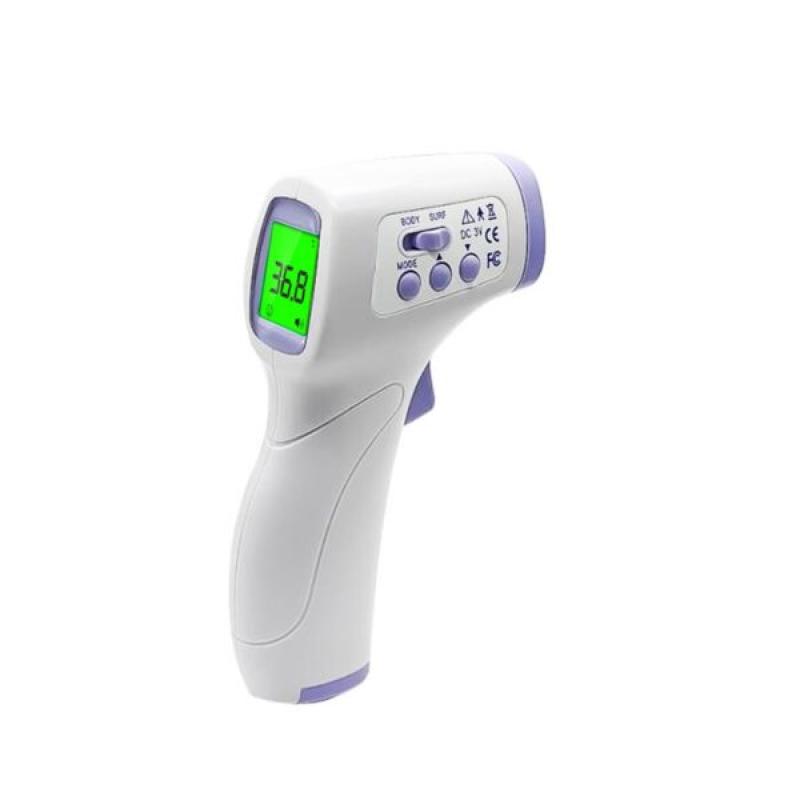What is an Infrared Thermometer?
An radiation thermometer, also called an IR thermometer or infrared laser thermometer, is a handheld or non-contact device that measures temperature without touching an object. It does this through infrared technology which detects infrared energy, or heat, emitted from an object in its field of view to determine the object's surface temperature.
How Infrared Thermometer Work
Infrared Thermometer work on the principle that all objects emit a certain amount of infrared energy that is directly related to their temperature. The greater the temperature of an object, the more infrared energy it radiates. Radiation thermometers have an infrared detector which measures the infrared light radiating from the target. This signal is then processed by an electronic circuit inside the thermometer that converts the infrared reading to a temperature display.
To take a measurement, the user simply points the radiation thermometer at an object from a short distance away, usually a few inches, and pulls the trigger. The thermometer instantly reads and displays the surface temperature of the target object. Measurements are non-contact so there is no need to touch the object being measured or even make physical contact. This allows radiation thermometers to take temperature readings in applications where contact sensors cannot.
Key Advantages of Radiation thermometers
- They allow for non-contact temperature measurements. This is beneficial for measuring hot, moving or inaccessible objects safely where contact thermometers cannot reach or would damage the object.
- Readings are fast, usually displaying the temperature within a second of pulling the trigger. This allows for rapid temperature scanning and monitoring of multiple points.
- Distance spot ratio allows measurements from a distance and large spot sizes on targets, which contact thermometers cannot achieve. This is useful for scanning large areas quickly.
- Safety is improved as there is zero risk of contamination from one measurement to the next and no risk of burns occurring from touching hot objects.
Common Applications
Given these advantages, radiation thermometers are widely used for temperature measurement in various industrial, commercial and consumer applications:
Industrial Applications
- Process and quality control in manufacturing - Checking the temperature of materials, products, liquids etc. during production.
- Predictive maintenance of machinery - Scanning equipment for hot spots that may indicate faults or electrical issues.
- HVAC systems - Checking airflow temperatures, ensuring even heating/cooling distribution etc.
Commercial Applications
- Food inspection - Monitoring food temperatures during cooking, refrigeration, transportation etc.
- Kitchen appliances - Ensuring equipment like ovens operate at safe temperatures.
- Building inspection - Scanning for drafts, air leaks or moisture issues by temperature variations.
Consumer Applications
- Home appliances - Testing refrigerator/freezer temperatures, oven heat accuracy etc.
- Outdoor grilling - Monitoring meat and surface temperatures while cooking on a grill or barbecue.
- Wellness - Checking body surface temperature, food temperature safely.
Key Factors to Consider When Purchasing
When selecting an radiation thermometer, there are a few important specifications and ratings to consider:
- Temperature measurement range - Choose a model suitable for the temperatures you need to measure. Ranges vary from -50°C to 750°C typically.
- Accuracy - Look for an error percentage rating like ±1% or 2%. Higher end models offer ±0.5% for precision work.
- Emissivity setting - Allows adjusting for surfaces that don't emit like a true blackbody. Look for an adjustable emissivity from 0.1-1.
- Response time - How fast it responds to changing temperatures. Sub-second response ensures fast changing temps can be tracked.
- Distance to spot ratio - The ratio of distance to target and measured spot size. Higher is better for flexibility.
- Display - Check resolution, backlighting and hold functions on the LCD. Touch displays offer menu ease.
- Data analysis - Advanced models can log and download measurements for recordkeeping or reports.
- Additional sensors - Some integrate infrared with contact probes or laser pointers for convenience.
- Durability - Consider impact resistance, water/dust proofing for harsh industrial/field use cases.
- Price - Cost varies greatly by features and brand from $30—$1000 USD or more for high-precision models.
radiation thermometers provide an invaluable solution for non-contact temperature measurement across many industries and applications. Their fast, safe and versatile measurement capabilities fill needs where traditional contact thermometers are unsuitable or impractical. With infrared technology improving affordably, these thermometers have become essential tools both commercially and residentially for applications ranging from process control to everyday cooking and homecare. Choosing a model suited to your specific temperature ranges and work environment ensures accurate, reliable service for years to come.
For Deeper Insights, Find the Report in the Language that You want:
About Author:
Priya Pandey is a dynamic and passionate editor with over three years of expertise in content editing and proofreading. Holding a bachelor's degree in biotechnology, Priya has a knack for making the content engaging. Her diverse portfolio includes editing documents across different industries, including food and beverages, information and technology, healthcare, chemical and materials, etc. Priya's meticulous attention to detail and commitment to excellence make her an invaluable asset in the world of content creation and refinement.
(LinkedIn- https://www.linkedin.com/in/priya-pandey-8417a8173/)
